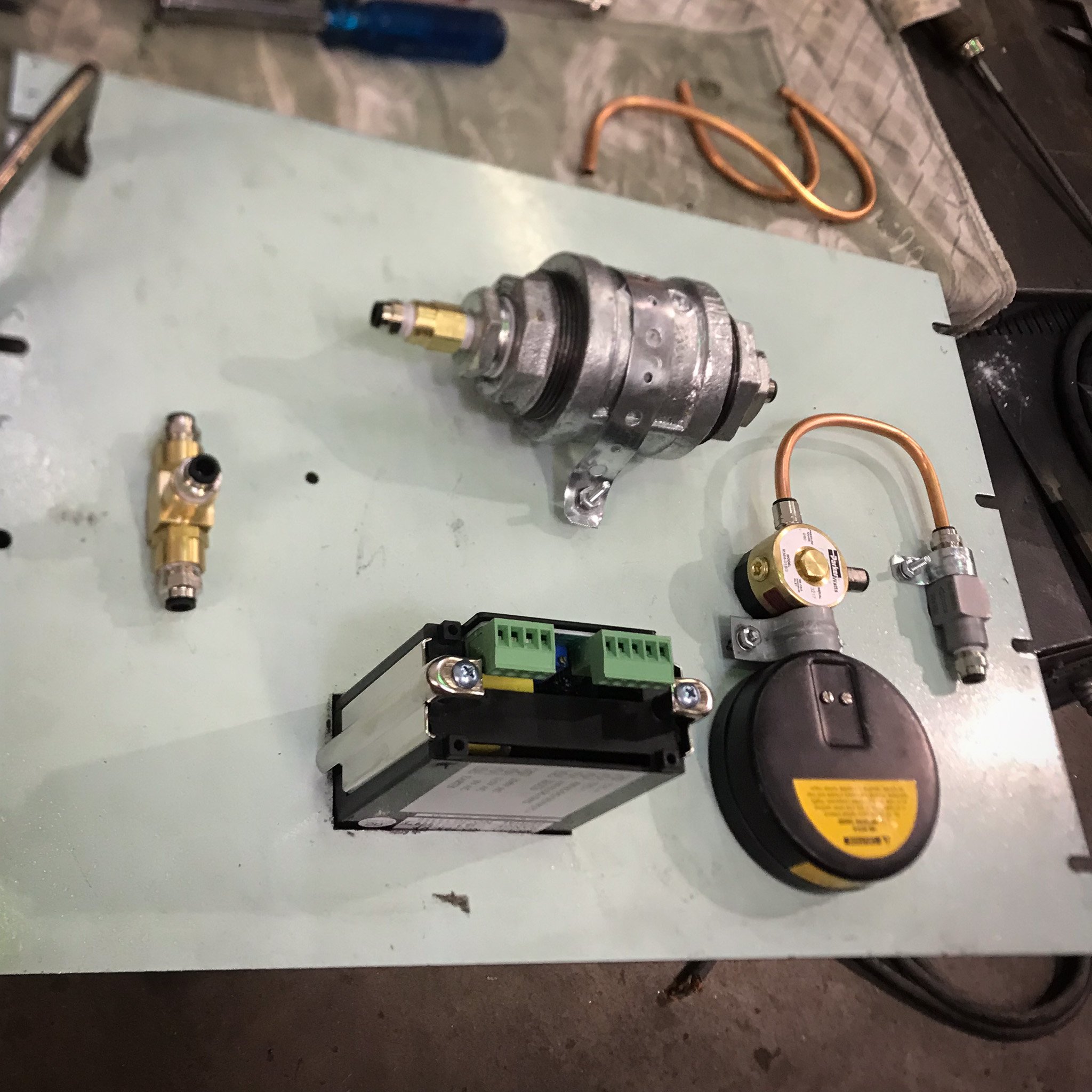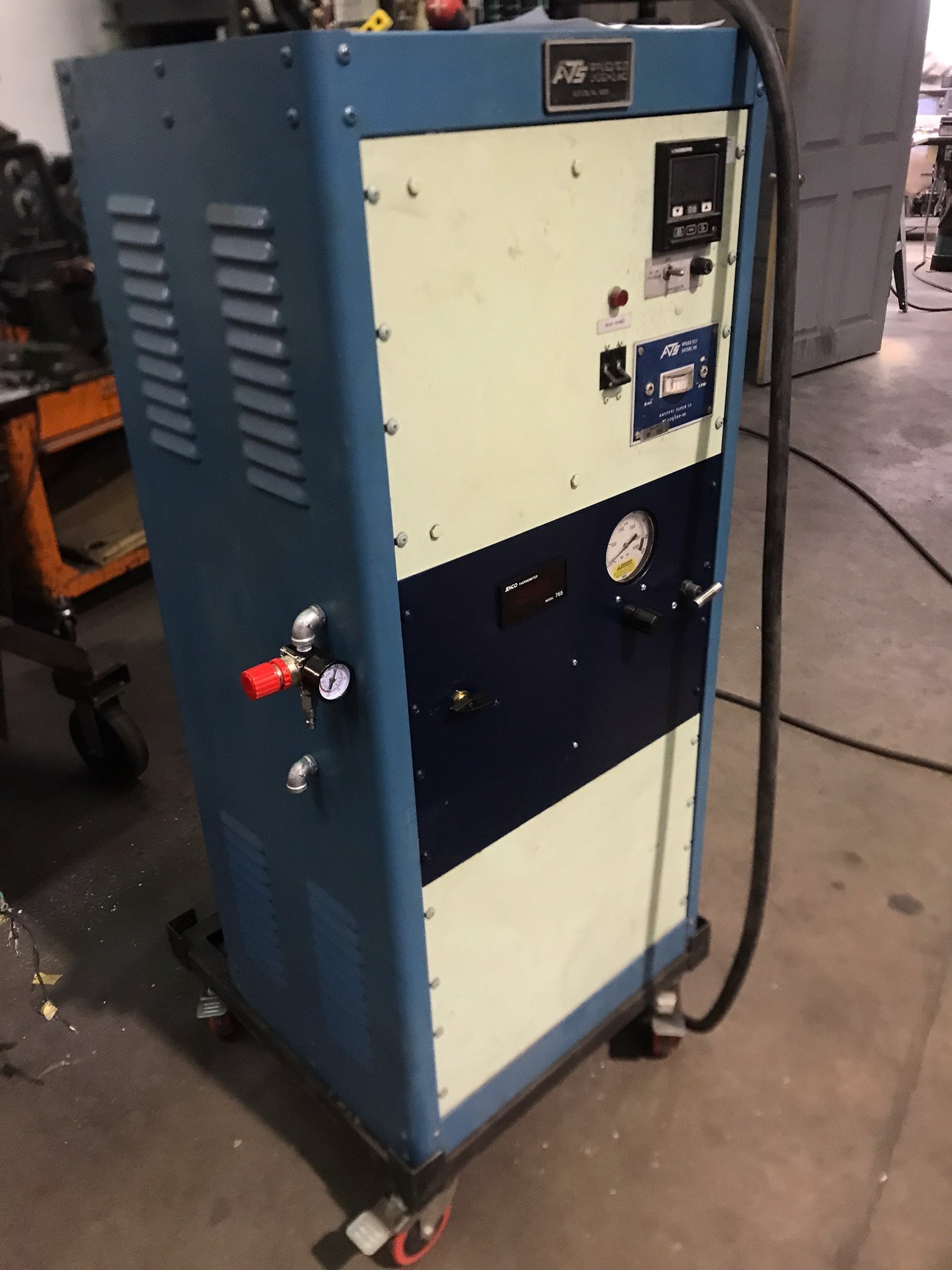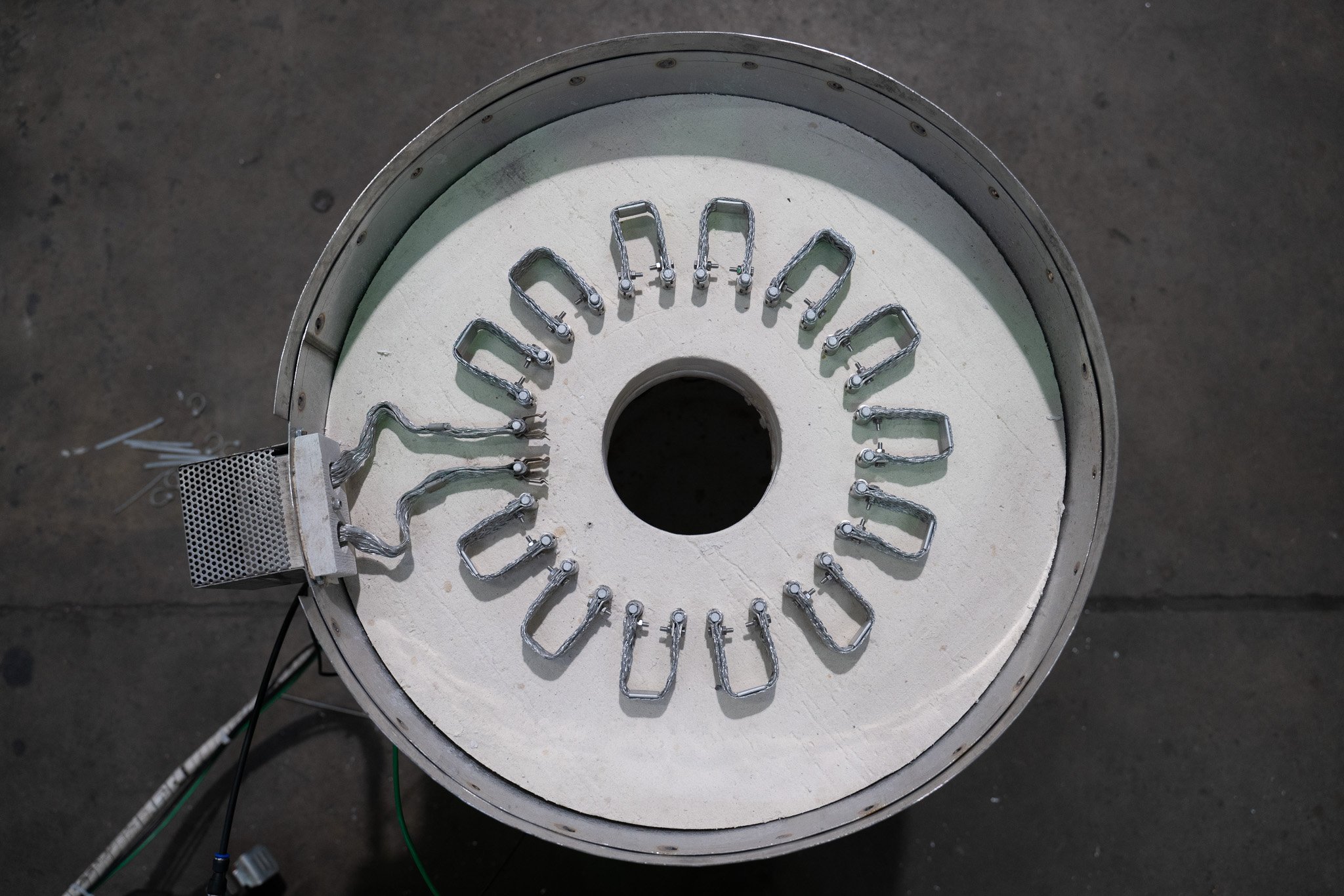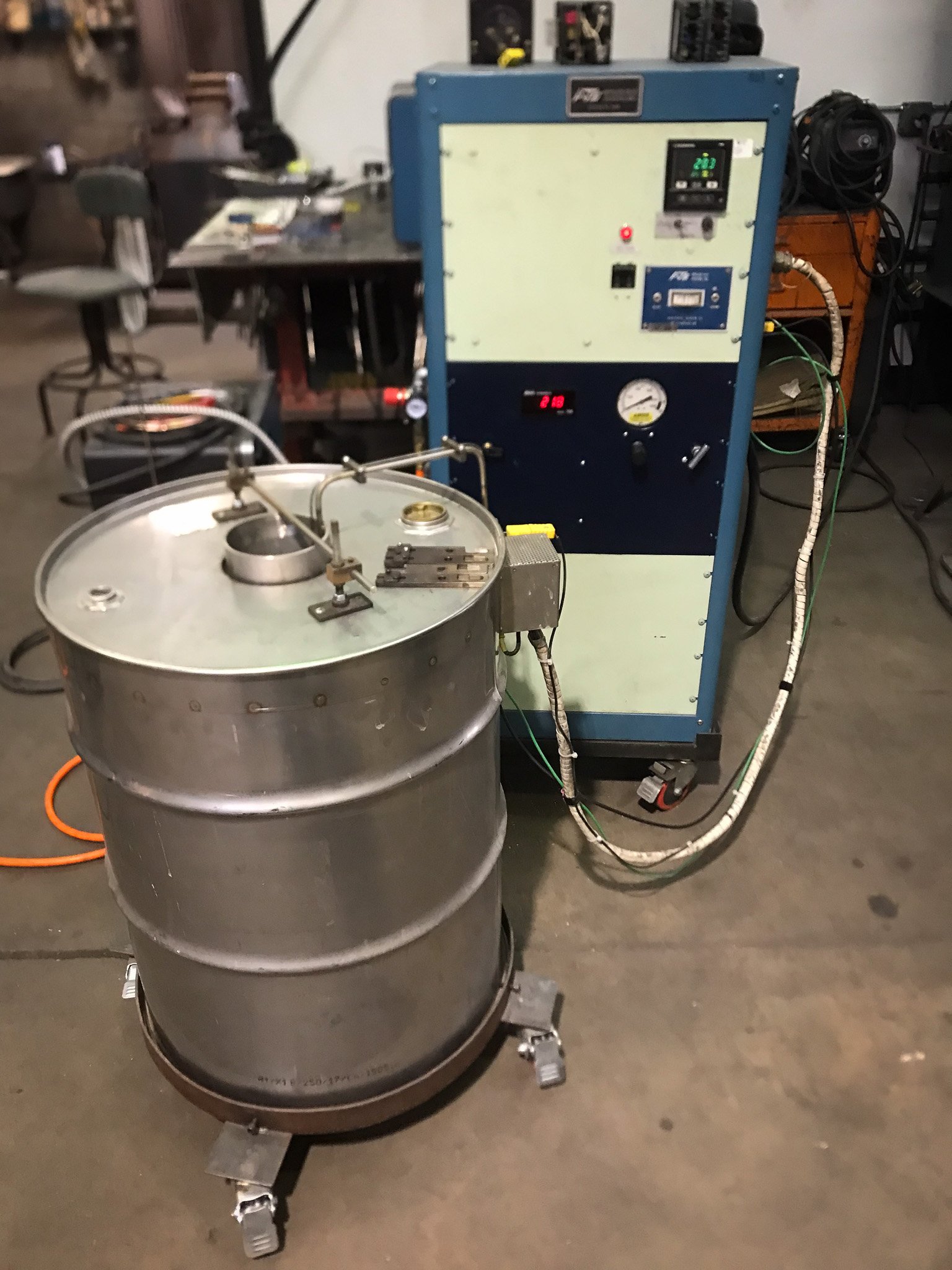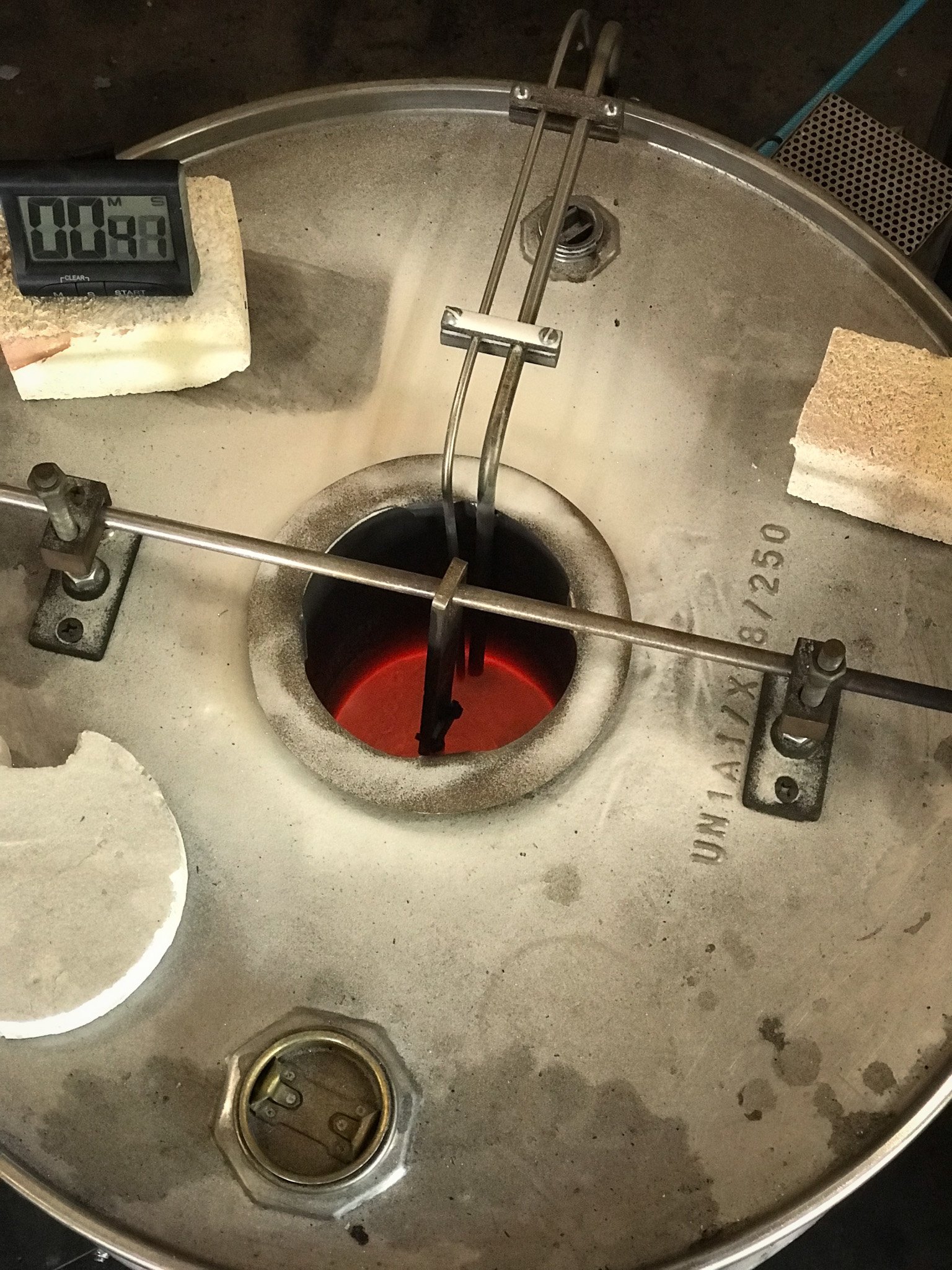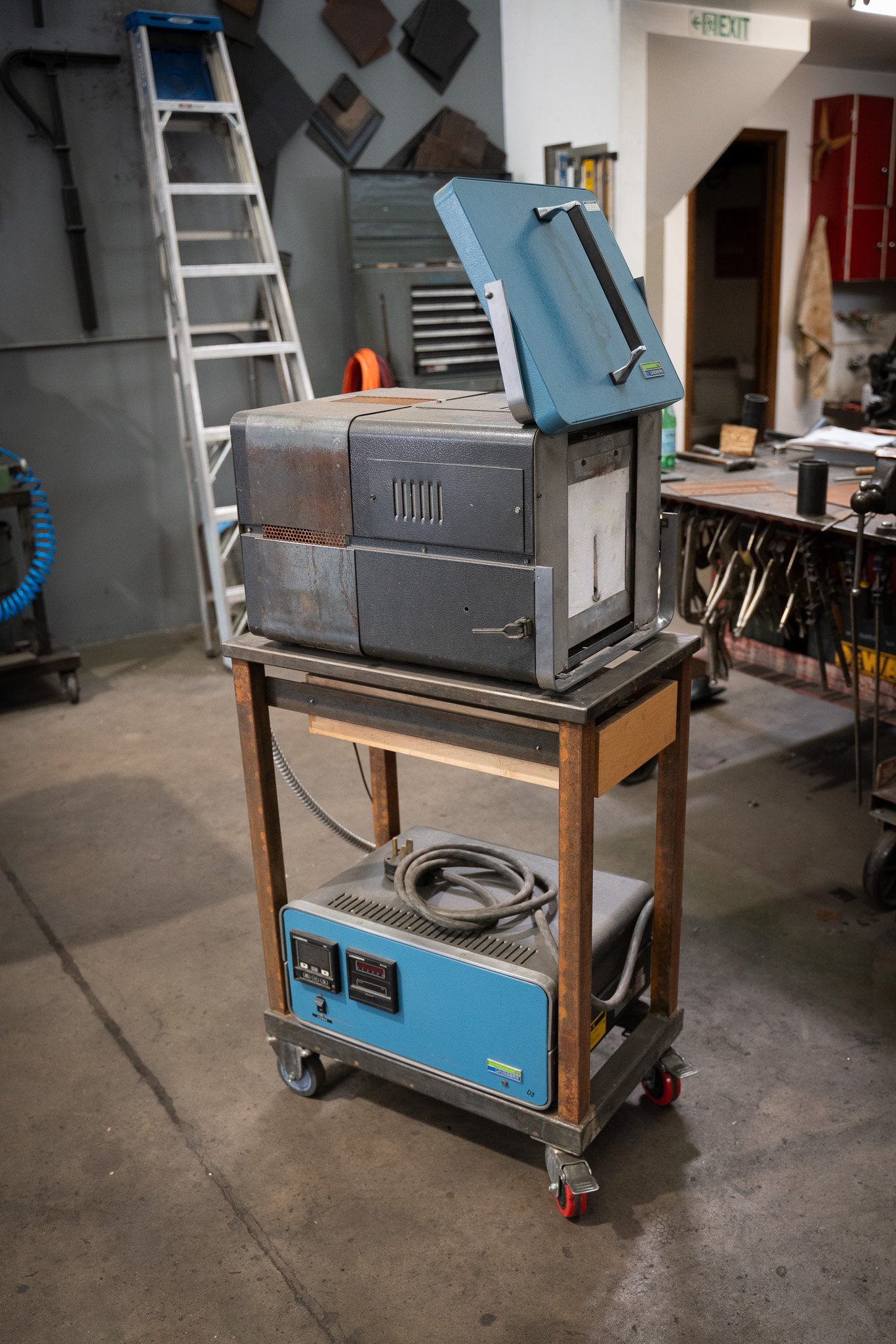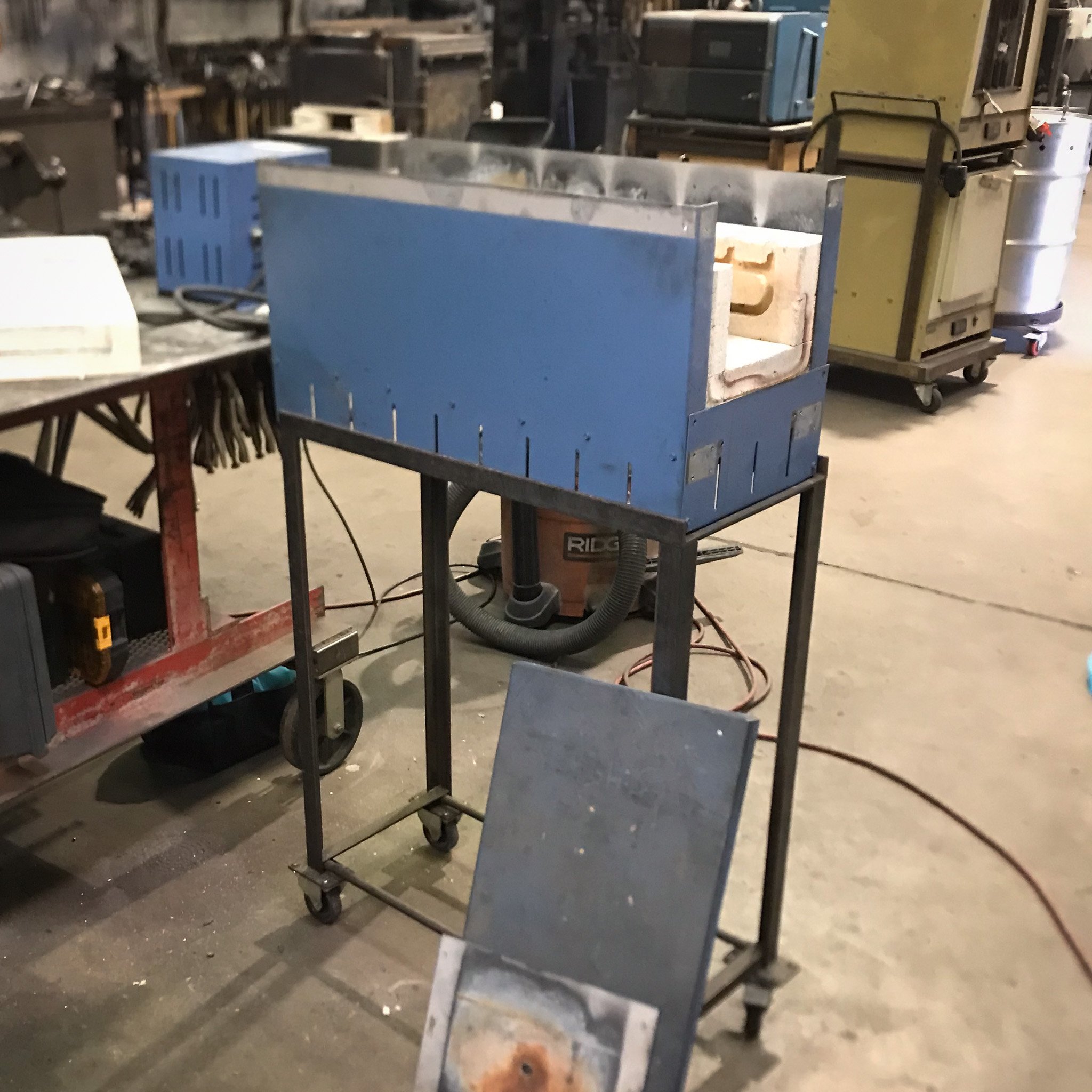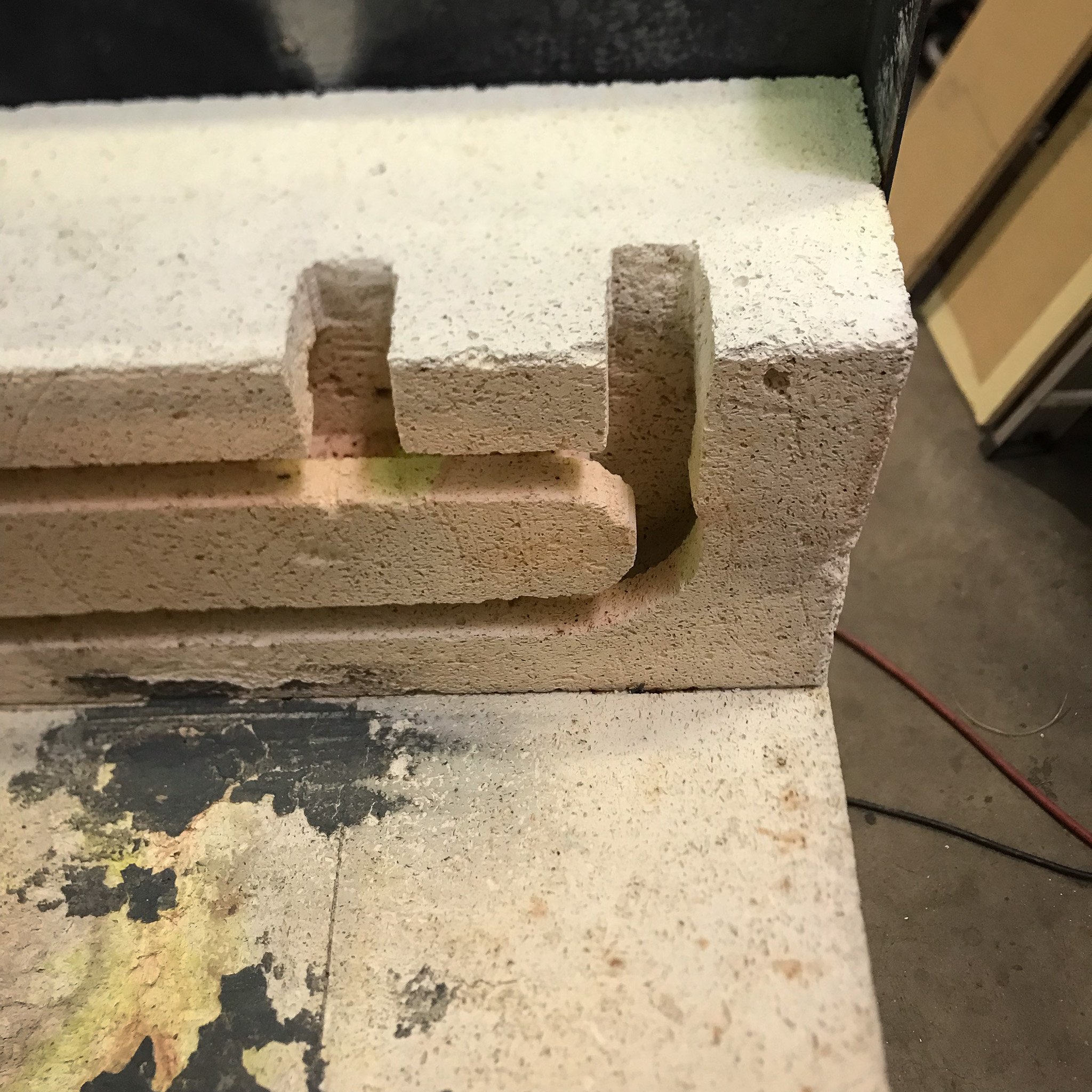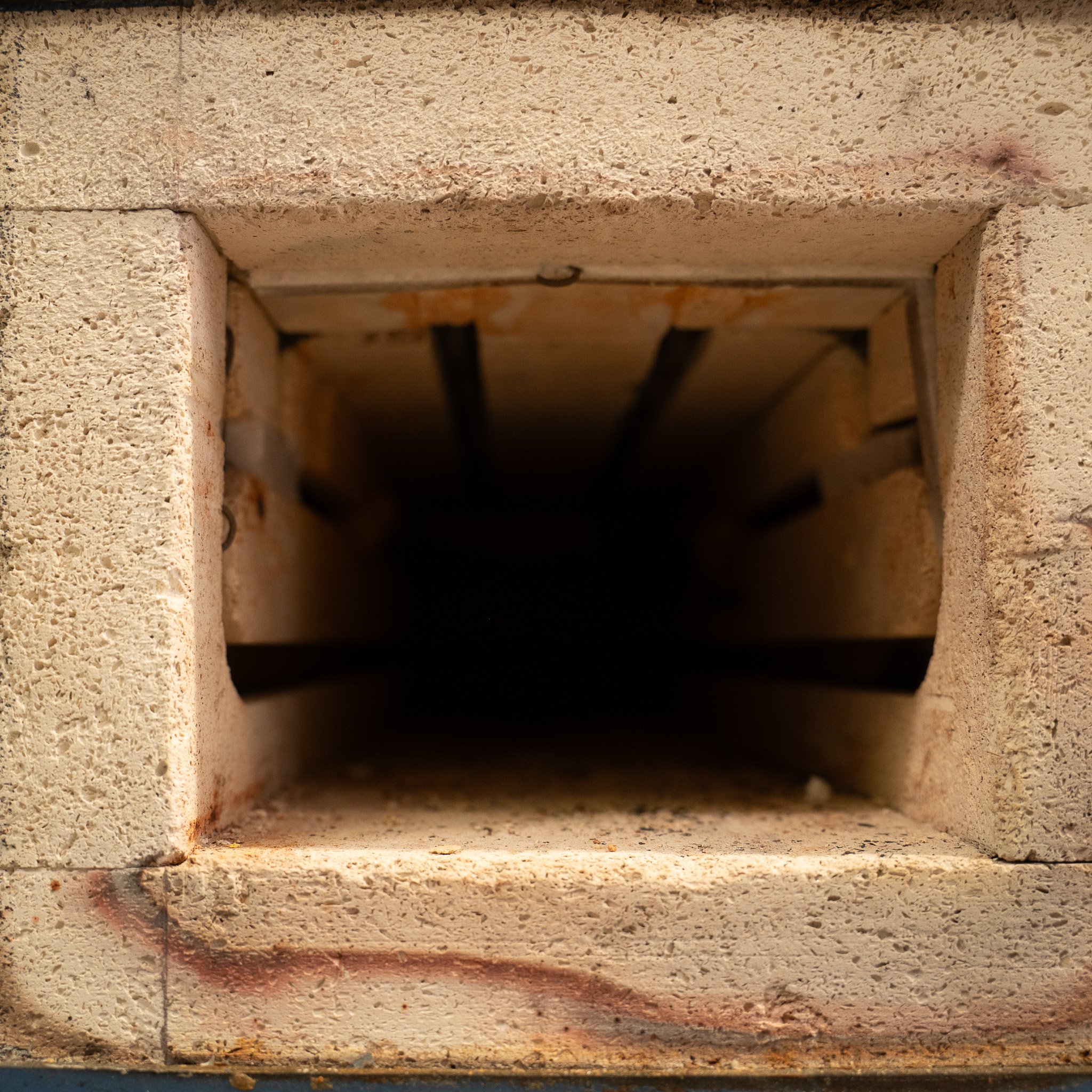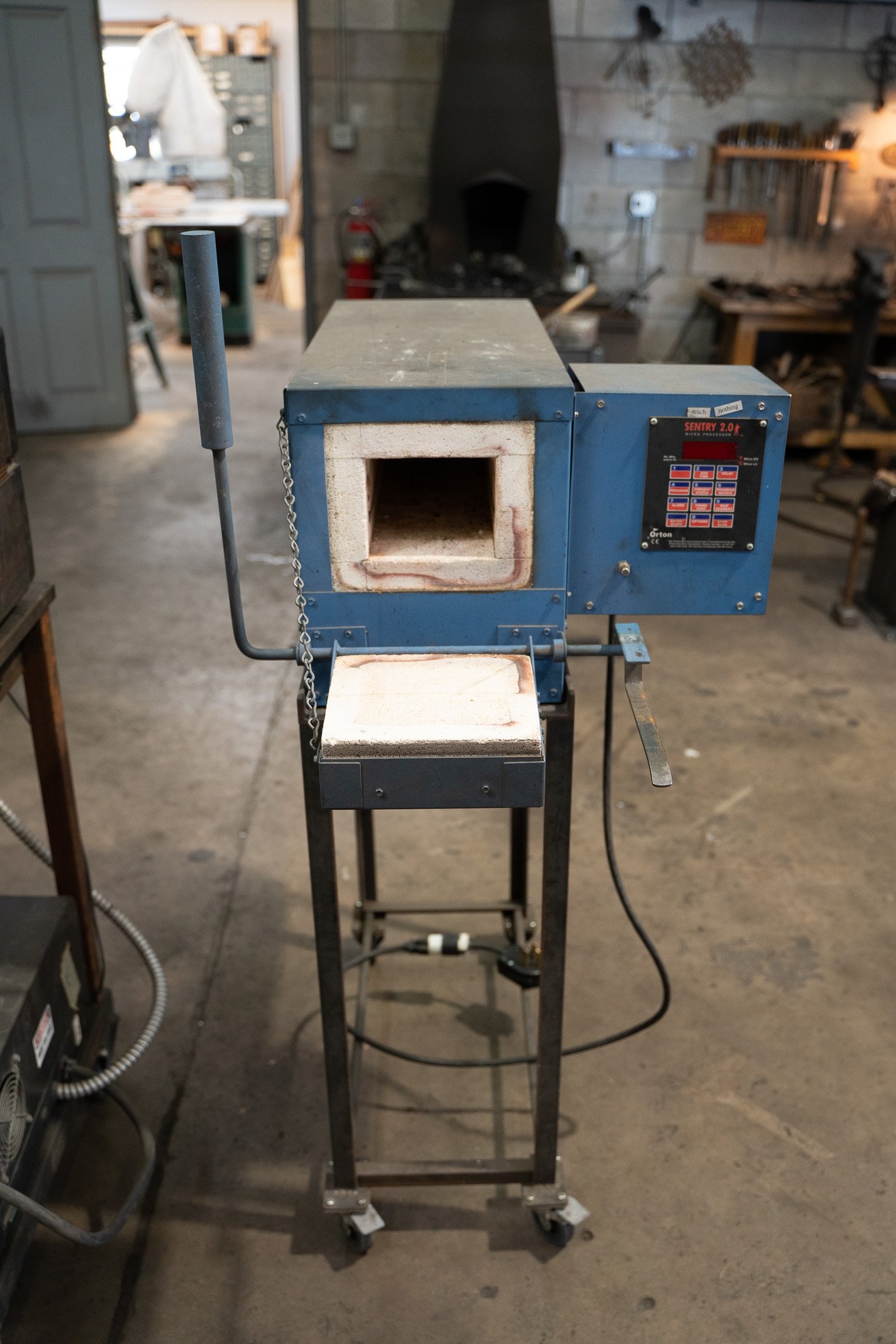Heat Treating equipment upgrades
2023 has been the year of heat treating equipment builds, breakdowns and rebuilds. About two years ago I began planning and collecting components to rebuild my molten salt furnace (which oxidized itself to death) as a fluidized sand bed (FSB) furnace. In January I got underway with the work, (I’m afraid I didn’t do a very good job documenting).
I chose a stainless steel 55 gallon drum for the “chassis” of the furnace. The stainless steel retort with gas inlet was purchased from Tobias Hangler in Austria. The MoSi2 heating elements are arranged around the retort and many layers of tightly fitting insulation are fabricated around them. The Controller for the MoSi2 elements was already configured from the salt furnace but I needed to add a control panel for the fluidizing gas regulation and air/argon switching. I also added an additional thermocouple to the space around the retort (where the heating elements are) so that I can monitor the “overshoot” as the unit is coming up to temp.
The hardest part was getting the fluidization characteristic correct. I must have tried 4-5 different fused alumina products before it acted right. The diffusion could be prettier, but 12” test strips of steel that were treated in the unit are consistent in hardness from one end to the other. To me, this says that the fluidization is adequate.
The biggest drawback to this kind of system is that it takes a big investment of energy to get the mass of sand up to and stabilized at temperature. And after running it a few times, I decided that I did not want to run it to the high temperatures needed for stainless steels, even though I had designed it to reach 1100c.
To address these two issues, I rebuilt this furnace (above). I cut the chassis and lengthened it like a stretched limo so it would be long enough for kitchen knives. This meant fabricating a new inner chamber from ceramic insulation. I kept the original door, which swings up but I added another 2” of insulation behind that with a slot. I also devised a little “clamp” to hold the tang of the knives so that they stay straight up while heating. This unit uses 6 MoSi2 heating elements and can reach 1100c in less than 15 minutes! The FSB takes more than two hours.
Meanwhile, the muffle furnace I have been using for annealing and tempering for over ten years burnt out a heating element. This is the downfall of muffle furnaces. Because the heating elements are imbedded in the insulation, there is no way to replace the heating element. One can only replace the entire muffle. Lindberg quoted me over $4,000 for a new muffle.
So I decided to rebuild Ye olde Paragon knife makers kiln instead.
This is the first heat treating kiln/furnace I ever owned and the only one I bought new. Its been in storage for 15 years. It was so poorly designed that I gave up on using it for austenitizing after just a few tests. The problem is that the heating elements were arranged along the side and back of the furnace and the thermocouple was placed near the front! A perfect recipe for a kiln that runs much hotter at the back than at the front. So I kept it around for the rare occasion when I wanted to anneal something that was too long for the Lindberg but its never seen much use.
Its time has come. I worked out a different path for the heating element along the sides and top, disassembled and routed out the channels in the fire brick. I also relocated the thermocouple to the midpoint of the furnace chamber. Its now operating much more evenly and has replaced the (broken) Lindberg muffle furnace as the primary annealing and tempering unit.
Hopefully, this lineup will last for a long time. I will eventually add Argon though-gas to the MoSi2 slot-kiln and rebuild the defunct Lindberg muffle but for now I need to focus on making knives. In fact, I have some new ones I will write about soon…
From the right: Two Lindberg muffles, top unit is preheat for Austenitizing, bottom is broken. Power/control unit for FSB. Insulated retort for FSB. Rebuilt Paragon. Rebuilt MoSi2 slot kiln.

